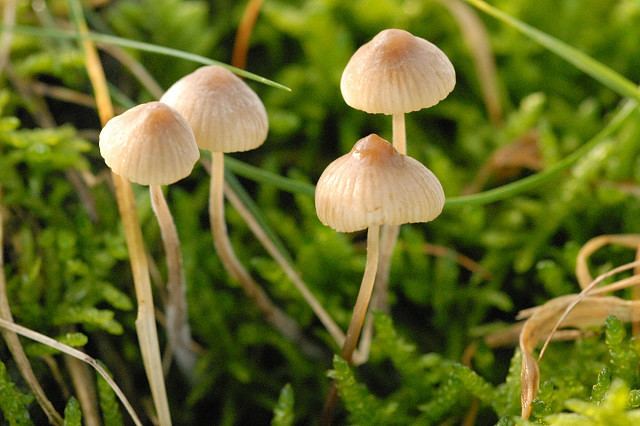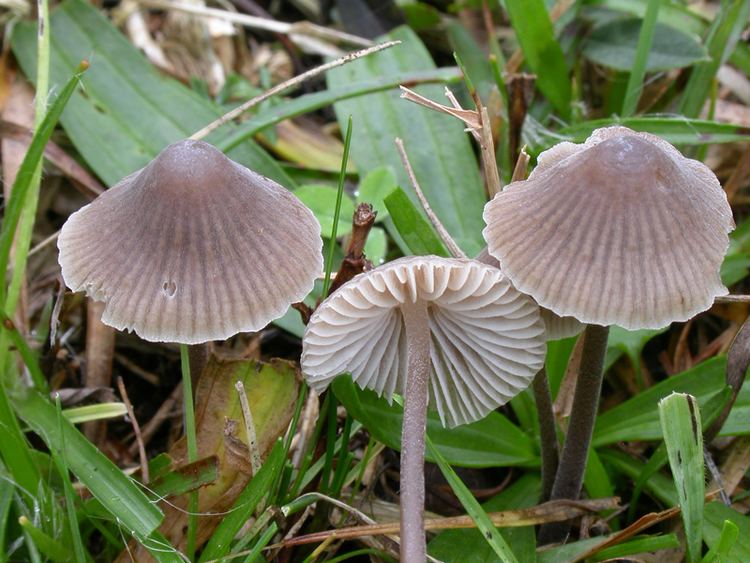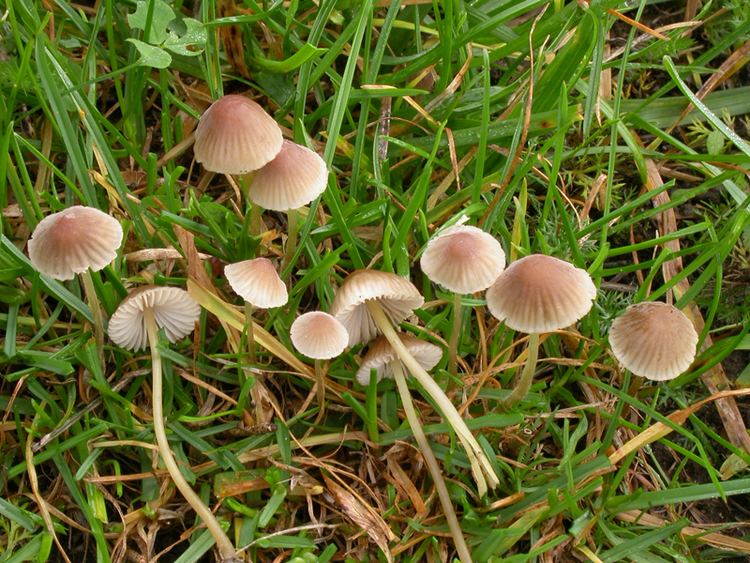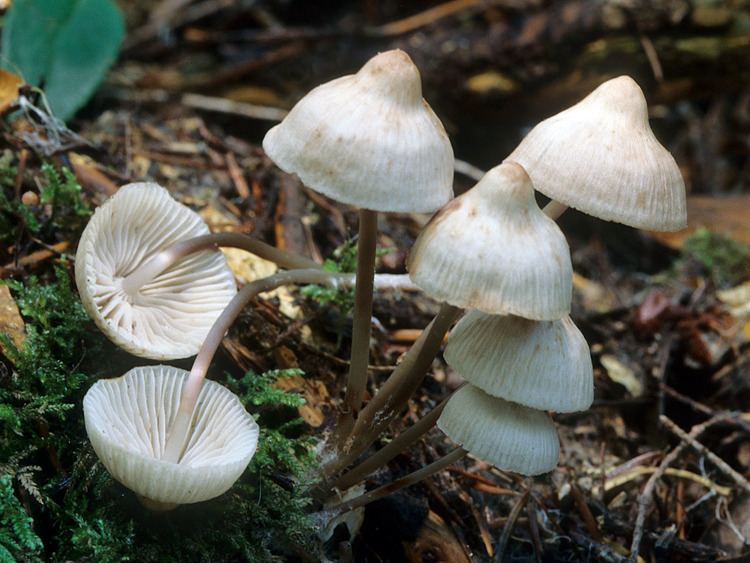Order Agaricales Scientific name Mycena Rank Genus | Division Basidiomycota Family Mycenaceae Higher classification Mycenaceae | |
 | ||
Lower classifications Mycena pura, Mycena haematopus, Mycena chlorophos, Mycena interrupta, Mycena rosea | ||
Mycena cyanorrhiza fungi kingdom
Mycena is a large genus of small saprotrophic mushrooms that are rarely more than a few centimeters in width. They are characterized by a white spore print, a small conical or bell-shaped cap, and a thin fragile stem. Most are gray or brown, but a few species have brighter colors. Most have a translucent and striate cap, which rarely has an incurved margin. The gills are attached and usually have cystidia. Some species, like Mycena haematopus, exude a latex when the stem is broken, and many species have a chlorine-like odor.
Contents

Mycenas are hard to identify to species and some are distinguishable only by microscopic features such as the shape of the cystidia. Some species are edible, while others contain toxins, but the edibility of most is not known, as they are too small to be useful in cooking. Mycena cyanorrhiza stains blue and contains the hallucinogen psilocybin and Mycena pura contains the mycotoxin muscarine.

Over 33 species are known to be bioluminescent, creating a glow known as foxfire. These species are divided among 16 lineages, leading to evolutionary uncertainty in whether the luminescence developed once and was lost among many species, or evolved in parallel by several species. What, if any, benefit the fungus derives from the luminescence is uncertain.

Alexander Smith's 1947 Mycena monograph identified 232 species; the genus is now known to include about 500 species worldwide. Maas Geesteranus divided the genus into 38 sections in 1992, providing keys to each for all the species of the Northern Hemisphere. Many new species have been discovered since then, and four new sections have been proposed. Taxonomy is complex, as most sections are not truly homogeneous, and the keys fail for some species, especially those that satisfy some criteria for only part of their life cycle. Some sections contain only one species.

The name Mycena comes from the Ancient Greek μύκης, meaning mushroom. Species in the genus Mycena (and in Hemimycena) are commonly known as bonnets.

